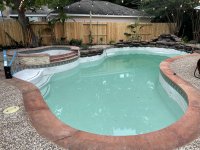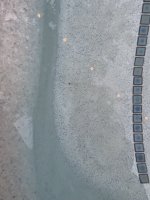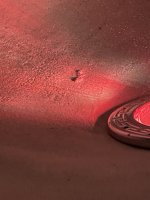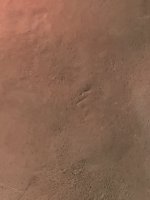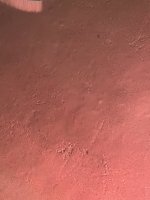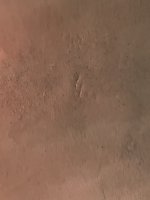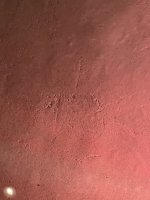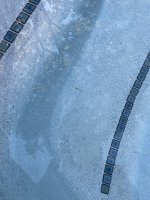 Hi folks, it’s been a long time since I’ve posted here, but this community has always been a wealth of information and any time I have questions this is the first place I come. I am now kicking myself for not coming here before we started the replaster process, but alas, here I am.
Hi folks, it’s been a long time since I’ve posted here, but this community has always been a wealth of information and any time I have questions this is the first place I come. I am now kicking myself for not coming here before we started the replaster process, but alas, here I am.We just had our pool replastered (quartz with a small bit of blue aggregate) on Monday and there are these tiny brown stains appearing all over the place. Have attached a pic of an example. At first I thought it was debris — we’ve had a couple of windy days here in Houston which has dumped in our “new” pool! But when they wouldn’t budge with a brush I realized something was up.
Texted builder, they’ll send someone out either tomorrow or Monday to have a look. The builder has been really great and the experience has been very positive. I expect that this will go smoothly; they saw my testing kit and binder (where I keep a chemical log and some instructions from pool school I printed out when we bought this house 6 years ago), I had intelligent conversations with them about water quality (thanks TFP!).
Anyway. I was reading through one of the pool school articles about new plaster startups just to make sure I’m doing everything right and came across a tidbit about abalone shells and brown staining and this seems like the likely culprit, but of course am hoping you guys can help me get my mind straight before they come over.
Yesterday was my first day attending to the pool alone, we paid the builder to do the startup. Based on what I’ve now read through, I believe it was a traditional startup. And their instructions to me said to keep water balanced, I told them I knew I needed to lean on positive side of LSI/CSI for first 30 days.
Hopefully this works, link to my pool log in PoolMath: PoolMath Logs


